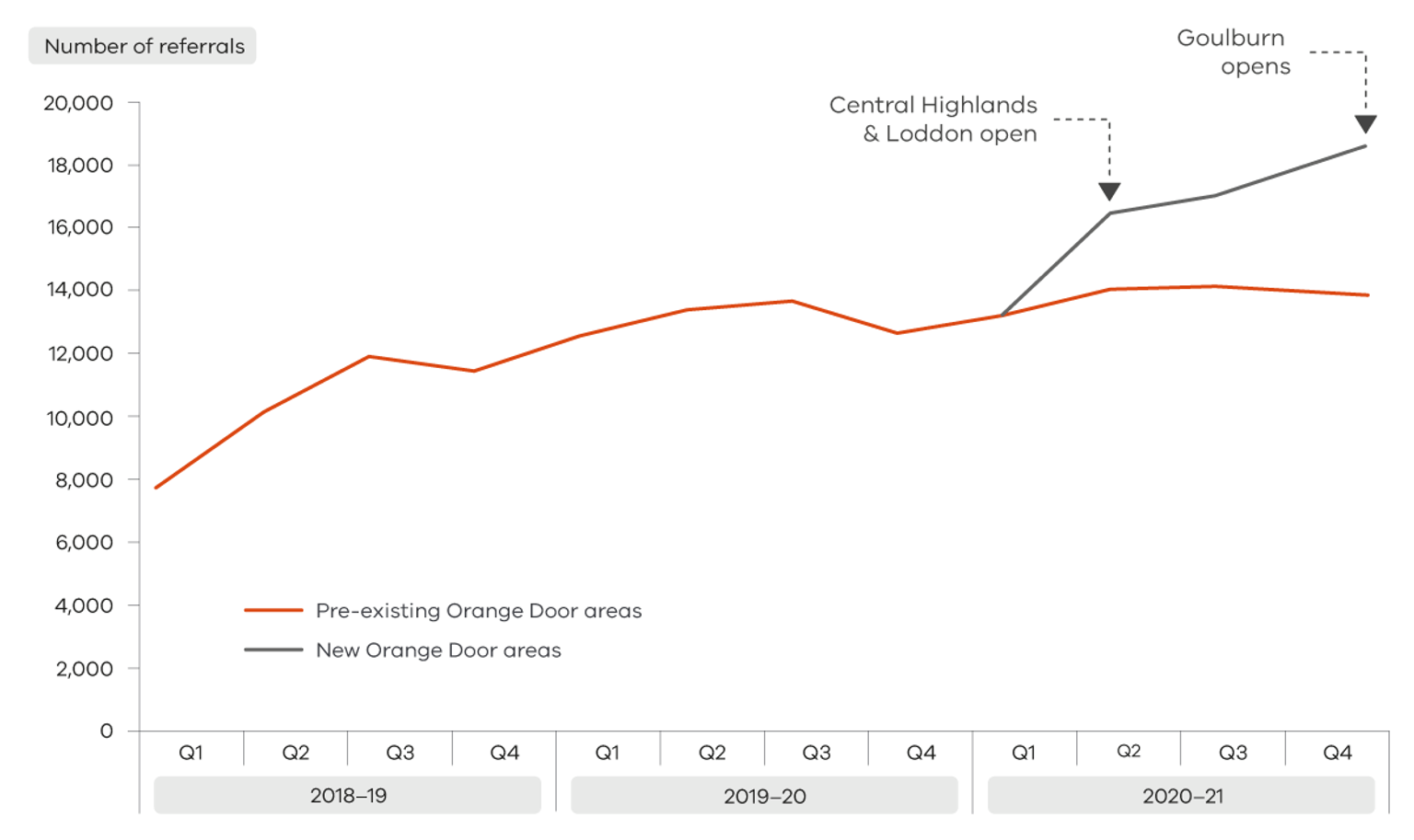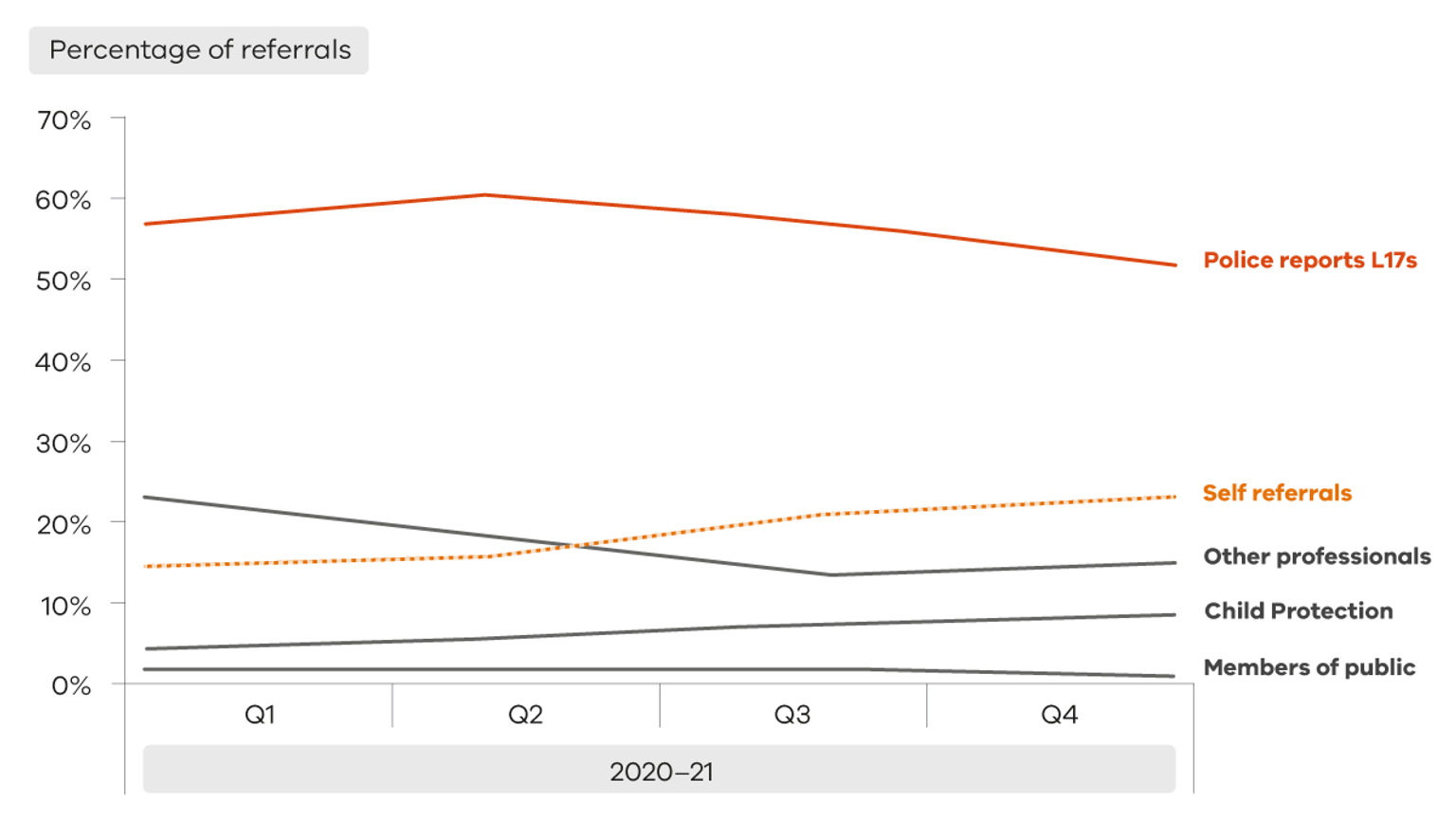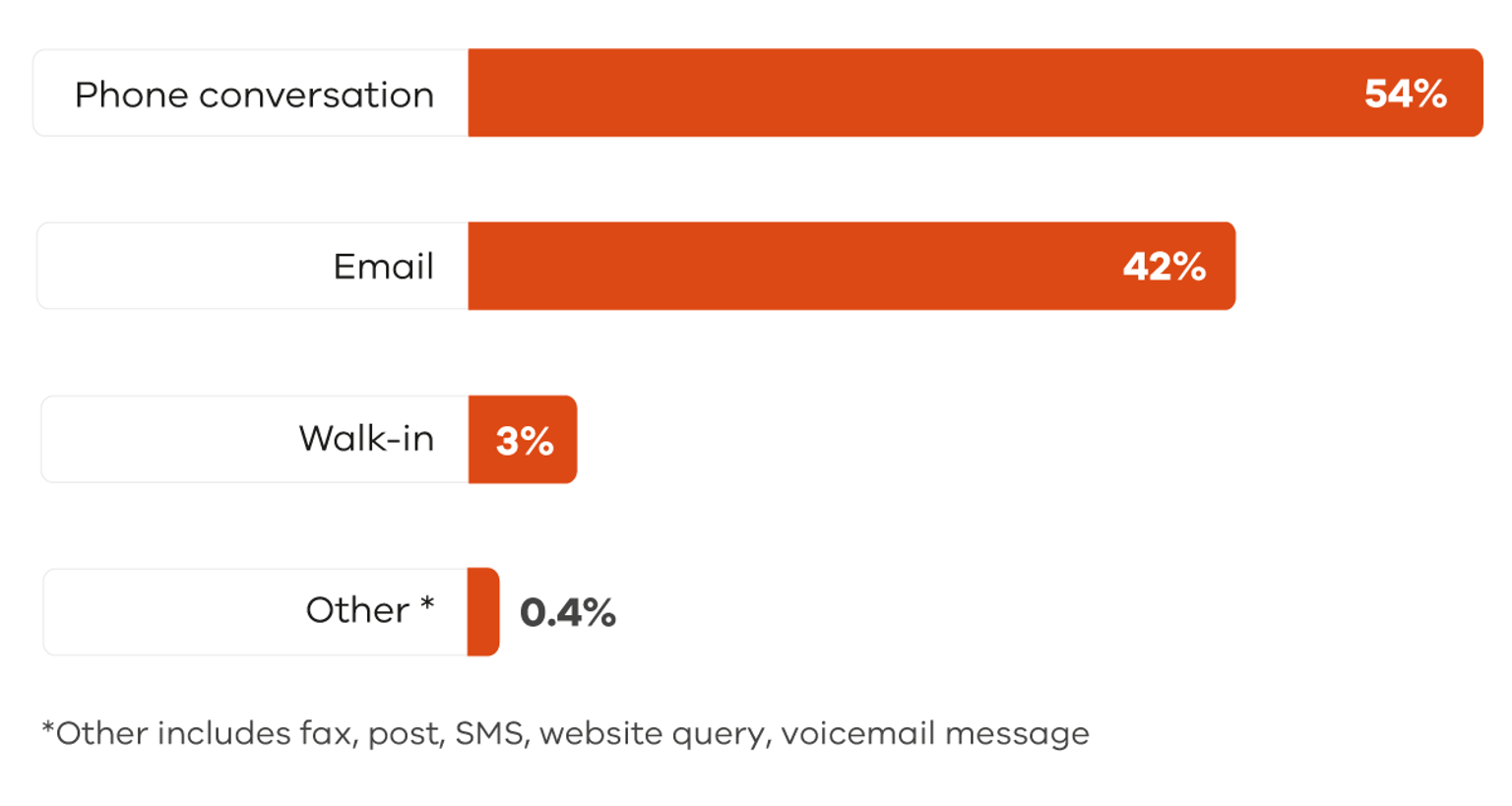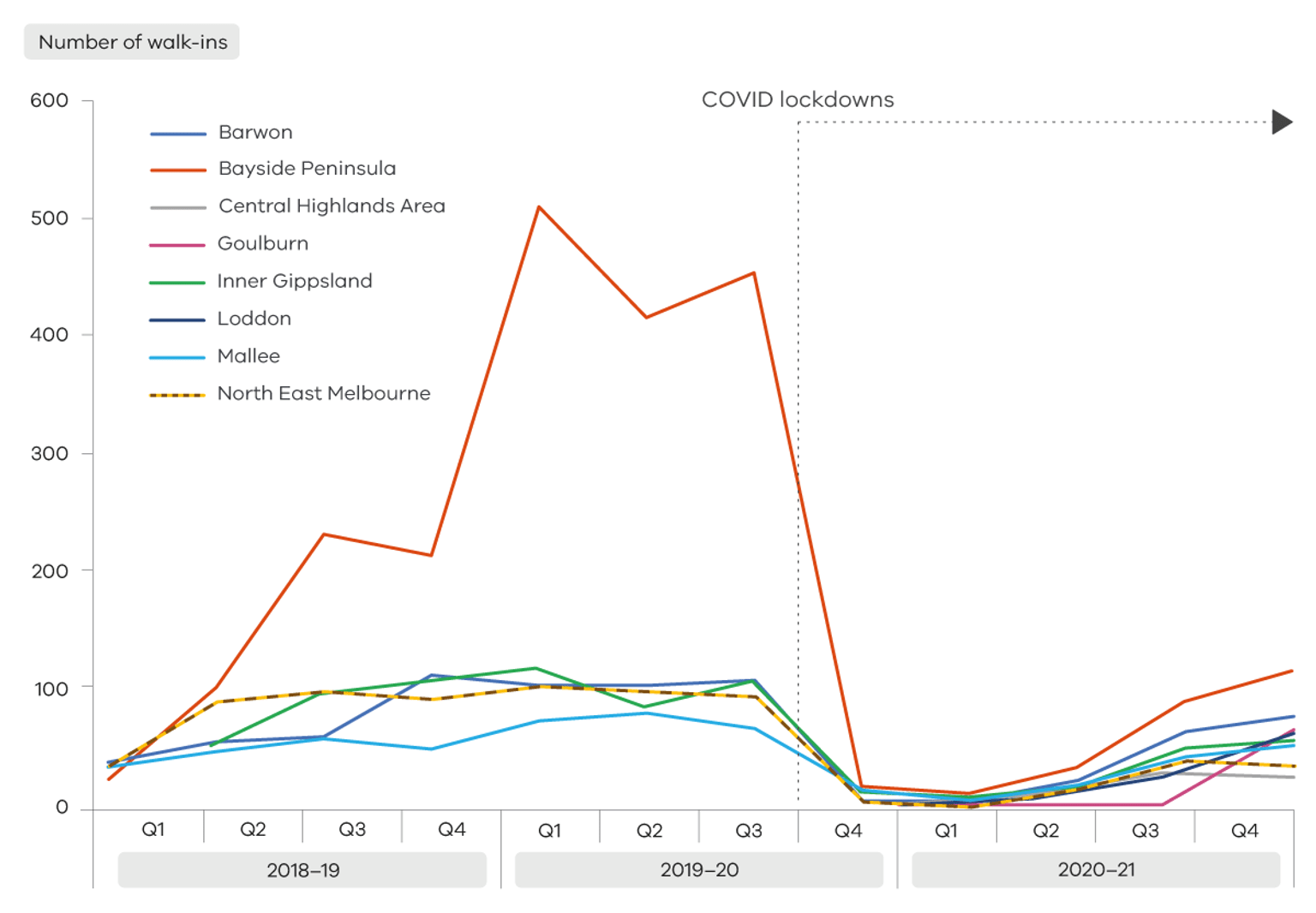How are people accessing The Orange Door network for assistance?
The Orange Door network aims to be accessible, safe, and welcoming to people, providing quick and simple access to support. In 2020-21, The Orange Door network received 66,309 referrals, a 30.4% increase compared to 2019-20. Over half of the referrals received (34,437) included at least one child.
The increase in referrals was mainly due to the expansion of the Orange Door network into the new operational areas of Central Highlands, Loddon and Goulburn in 2020-21 (as demonstrated in Figure 2). However, the pre-existing Orange Door areas (Bayside Peninsula, Barwon, Mallee, Inner Gippsland and North East Melbourne) also experienced an increase in referrals from 50,860 in 2019-20 to 55,011 in 2020-21 (8.2%). When comparing over a longer three-year time period, the number of referrals to these pre-existing areas increased by 33.7%, from a starting point of 41,135 in 2018-19.
Referrals to the Orange Door network come from a range of sources, including police reports, self-referrals, Child Protection, other professional sources and members of the public. Figure 3 provides the percentage contribution of these sources towards total referrals across the network, including quarterly trend over the last year.
Referrals that come directly from Victoria Police when there has been a report of an incident of family violence (known as ‘L17s’) are provided through a dedicated online portal (the L17 portal). In 2020-21, the most common way people accessed The Orange Door network was through police referral reports, making up 57.3 per cent of all referrals.
People do not need a professional referral to access The Orange Door network. Individuals and families who need support can make direct contact themselves, a ‘self-referral’. These self-referrals include contact via phone, email or attending The Orange Door.
In 2020‑21, self-referrals comprised 17.3% of all referrals, up from 17.0% in 2019-20 and 13.2% in 2018-19 (4.1 percentage point increase since 2018-19). This suggests that the number of people proactively seeking help is increasing and this may be the result of more visible and accessible entry points brought about by The Orange Door network.
Referrals of individuals and families can also be made by a range of professionals (including Child Protection) or members of the community. Professionals and members of the community can also contact The Orange Door network for information and advice where there are concerns for the safety of an adult or child and/or the wellbeing of a child.
How does the community presence of The Orange Door network support safe and easy access?
The Orange Door network is designed to be a safe and accessible community service, to make it easier for people seeking help for family violence or help with the wellbeing of children, young people and their families. People can contact The Orange Door network in ways that are convenient, safe and accessible for them, including through telephone, email and in person.
People who make direct contact to The Orange Door themselves (self-referral) generally do so via telephone (88.5%) as do people making contact on behalf of someone they know (89.9%). Referrals received from professionals (excluding the Family Violence reports from police) are mostly received via email (62.1%) or telephone (37.0%). Across all referral types, excluding the L17 portal, 54.2% of all referrals are received via telephone (Figure 4).
Each area has a toll-free telephone number and direct email address to facilitate easy contact. The Orange Door network website has a service finder function to support people to find the contact details for The Orange Door network in their area, or relevant services in areas where The Orange Door network is yet to be established. Information contained on The Orange Door website is accessible in 51 different languages. In 2020-21, the website was visited over 197,000 times by almost 122,000 people. This represented a 52% increase in visits and a 46% increase in users compared to 2019-20.
The physical premises of The Orange Door network have been established in locations that are central to the local community and public transport. The COVID-19 pandemic continued to have a significant impact on people’s access to the physical premises of The Orange Door network in 2020-21. This can be seen across all Orange Door areas which experienced a sharp decline in the number of walk-ins since the pandemic started (Figure 5). This decline occurred in spite of Victoria’s public health directive that people were always able to leave their homes to escape family violence risk or harm.
In 2020-21, a total of 865 individuals and families (1.3%) presented to The Orange Door network in person (walk-ins) to seek support for themselves or someone else, a 65.0% decrease compared to 2019-20. For the latter half of 2020-21 as lockdowns eased somewhat, the number of walk-ins began to recover but not to pre-pandemic levels.
Further analysis indicates that, while walk-ins to the five initial Orange Door areas remained low for a prolonged period over 2020 and 2021, self-referrals via phone calls to the network started to increase after March 2020. As a result, the overall number of self-referrals rebounded to a level similar to that seen before the pandemic by October 2020.
Updated



